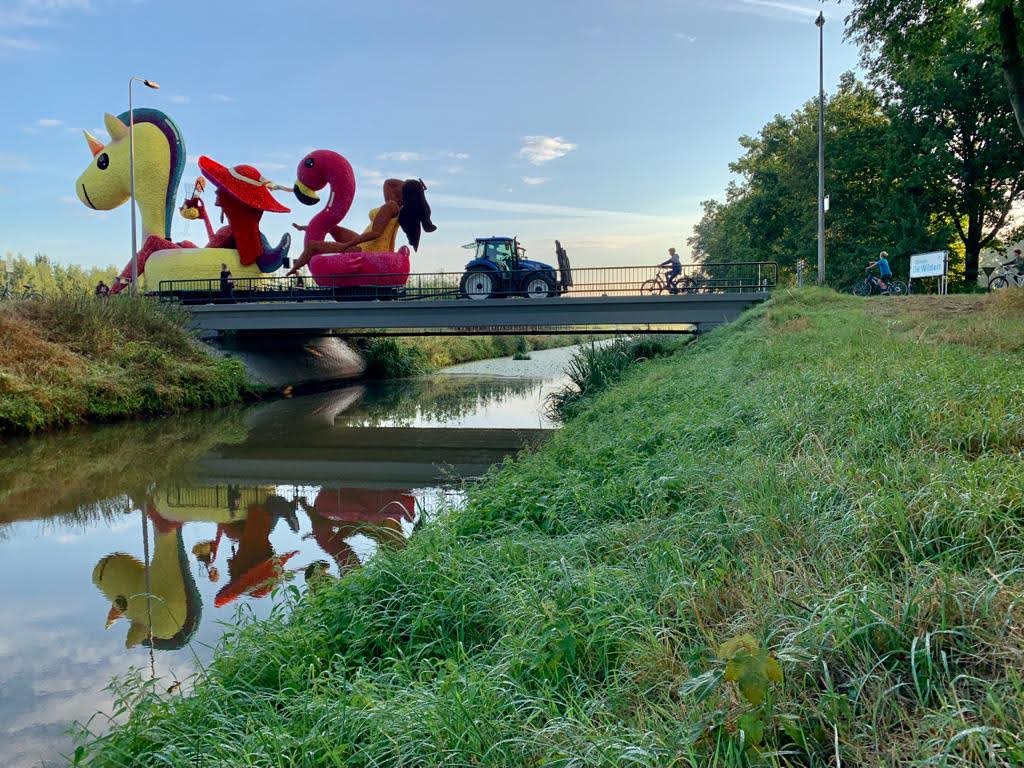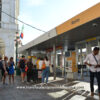Last Updated on: 13th May 2024, 09:43 pm
Every year on the first Sunday of September in Zundert, the Netherlands, 20 hamlets participate in Corso Zundert, a flower parade that takes all year and an entire community to prepare for. I interviewed Johan van der Kloof, secretary and vice president of hamlet Molenstraat, who tells us how it is done.
Q. Tell us a bit about your team and how long you have participated in Corso Zundert.
A. The name of our hamlet is Molenstraat (or translated into English: “Millstreet”). Our hamlet is the second oldest and it all started back in 1936.
The first float of the Molenstraat hamlet was named “De Zwaan” (In English: “The Swan“) and dahlia flowers were used for decoration. These flowers were picked from the gardens of local farmers and inhabitants and Dahlia’s because people couldn’t afford to buy roses.

Q. Where do you get the flowers from and how many flowers do you use each year?
A. Every hamlet has a piece of land to grow dahlias. In general, we rent about 1 hectare of land from a farmer. Some hamlets are lucky if there is a farmer living nearby who has a piece of fallow that can be used as a flower field. We will plant about 22,000 tubers for about 22 kinds of dahlias (that is about 1,000 tubers for each type). Not all dahlias are suitable for our floats. Ideally we need flowers that are uniformly coloured (no spots or stripes etc.), plants that give lot of flowers, and that after picking, the flowers must still last couple of days before deteriorating.
We hope the 22,000 tubers will give us a yield for our own parade of around 200,000 to 250,000 flowers.
Furthermore, it is also the volunteers who take care of the land, the planting, weeding, picking of the flowers et cetera.

Q. That is a lot of flowers!
A. A lot of flowers but still not enough for our float. For our 2023 float, we used up to 360,000 flowers.
In order to reach this number of flowers, we had to buy them. Another way to get them is to exchange flowers with other villages in the Netherlands and Belgium which also organises flower parades.
Our August dahlias are exchanged or sold to other villages and when we need them during our weekend, these other villages sell or exchange them. This year, we expect to need roughly same number of flowers, i.e. around 350,000.
Q. The Netherlands are known for tulips. Is there a reason why dahlias are used instead?
A. Indeed, we are well known for our tulips but they are very weak and can’t be handled the way we do with dahlias.
Q. The parade floats are very big. I understand everything is done by volunteers. Can you give us an outline of what happens during the preparation for the parade?
A. Timeline for the Dahlia season:
- Beginning of May: planting the tuber
- Starting from June onwards: weeding, removing unwanted herbs and plants
- Starting from beginning of July: picking the first dahlias for other parades
- End of August / beginning September: picking high season (this is also the best time to see flowers in the Netherlands!)
- End of September: the end of the picking season
- End of October/ beginning November (before first night frost) dig out the tubers and keep them in chilled storage (to prevent them rotting in the ground during winter)
- Mid-January: divide the tubers and hope all will survive winter period
Process of the dahlias from farm to float:
- Picking the flowers and putting into baskets
- Emptying the baskets into plastic crates
- Gather crates on a pallet
- Move pallets into a tractor or small truck from field to the construction tent
- Crates are held in storage until needed
- When a type of dahlia is needed, the crates are brought to volunteers who attach the flowers with small needles and thrown back in the crate
- One crates has about 320 flowers, when all are needled, the crate goes back to storage
- Whenever a specific dahlia is needed on the float, it is brought to the volunteer putting the flower on the float.
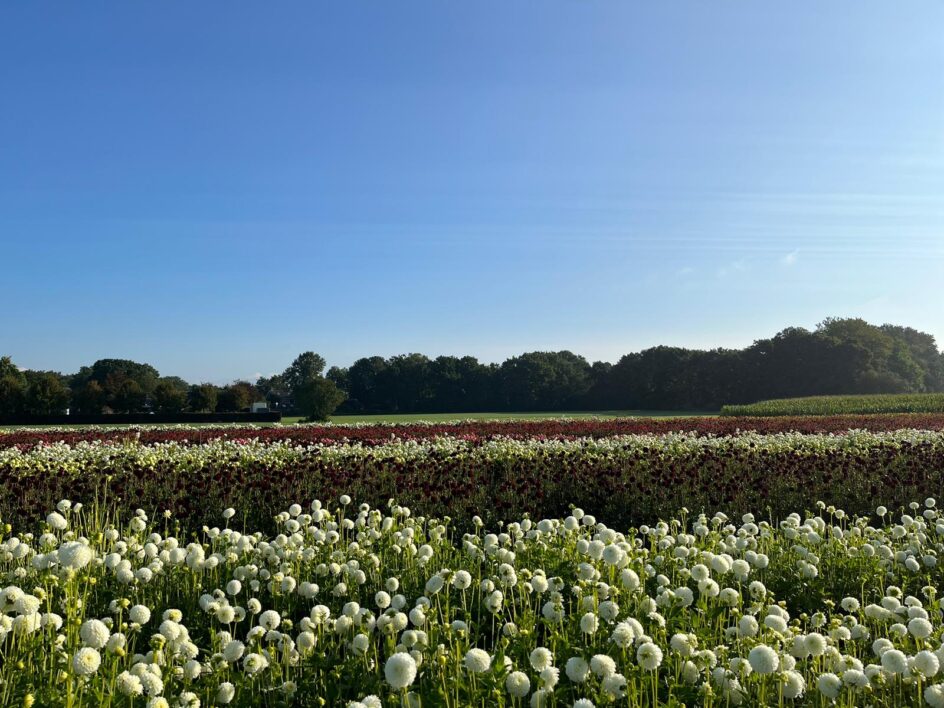
Q. Tell us about your parade float. Do you have a favourite one or one your hamlet is most proud of? How heavy are the floats? How big was your biggest one? Where do you get the costumes for the performers from?
A. It is hard to say which float is favourite or being most proud of. Every decade has its own specific memories and every generation will have its own favorite. In 1998 the group of fanatic people building the float was reduced. They were getting older, some moved to other villages, new techniques and movement of parts of the float entered the parade etc.
Luckily, in 1999 a group of youngsters joined our hamlet and a new kind of start was made. The design was based upon the Pink Floyd’s album: The Wall.
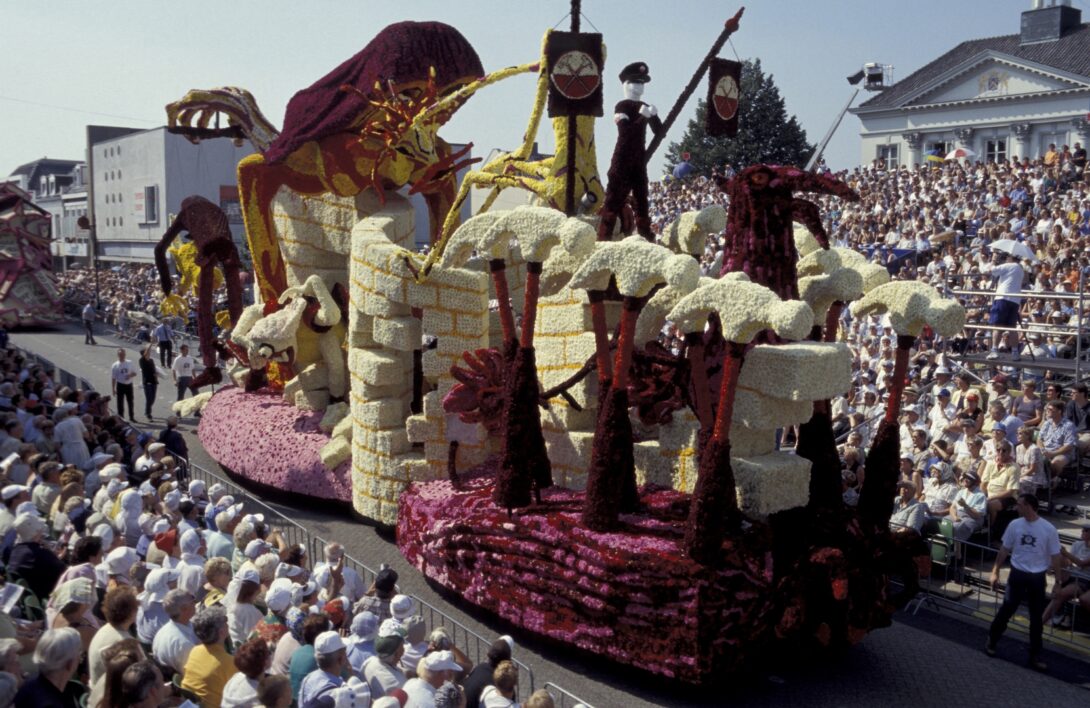
A next big step in our history was made in 2004 when 2 new designers joined our team and from that time onwards, our hamlet is known for its conceptional designs.
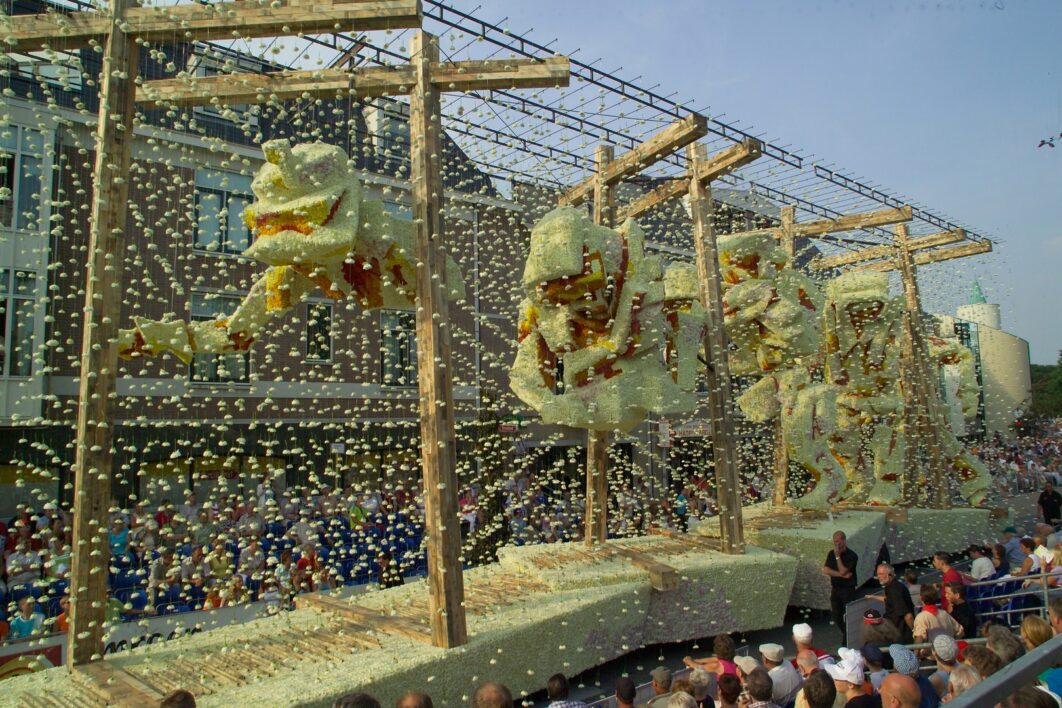
The biggest float we ever made was named “Boodschappen (Groceries)” in 2017. It consisted of products you buy in a grocery shop and the street was used as a conveyor belt. All together the float was 30 meters long.
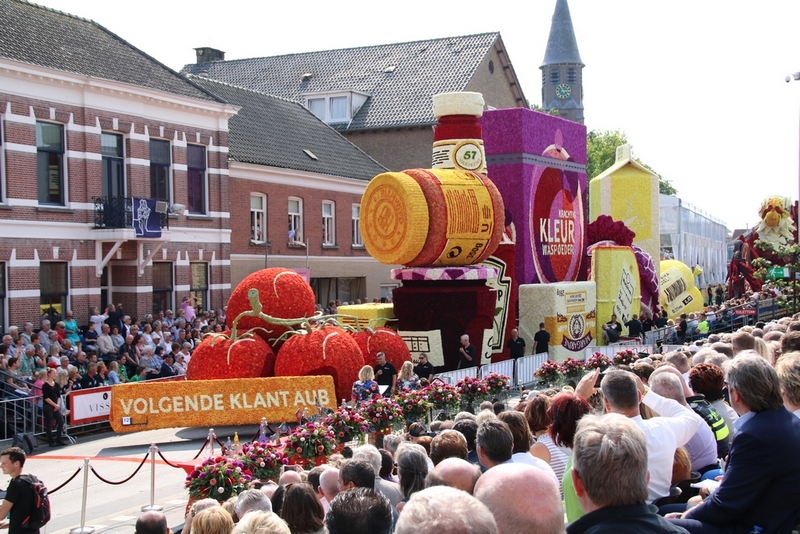
In the 1980’s it was decided to have restrictions on the size of the floats. For safety reasons as well as the fact that the floats did not fit in the streets of the village anymore. Floats have a maximum of 19 meters in length, 4,5 meters wide and 9 meters high. We are allowed to make a design for 2 or more separate floats but all of them within a maximum length of 30 meters.
The average weight of a float covered with flowers is around 12 metric tons.
Costumes are self-made as well as attributes, music, sound etc.
Q. Tell us about the whole process: from design on paper to attaching the flowers and cleaning up: Who are the people that help create and build the floats, especially with floats that have moving parts?
A. Today, in 2024, we have about 350 participants for which about 100 are fanatics in building the float, work on the land to grow Dahlia’s and all other kind of activities and things to do. We are all volunteers, and age, race or profession doesn’t matter. Everyone living inside or outside our hamlet is free to join and help with whatever and wherever they can. In general, you can see the younger people are building the float and the older ones are taking care of growing of the dahlia flowers.
In general, the designer is taking care for the music or sounds and our building committee is responsibility for the moving parts.
After the parade, all floats are parked at the exhibition area where you can enjoy and wonder how it’s made.
Timeline of process:
- January: Election of design
- February to April: preparation of construction
- May: start building up construction tent
- June to August/September: building the float
- 1st Sunday of September: Flower Parade
- Tuesday next: dismantling of the floats
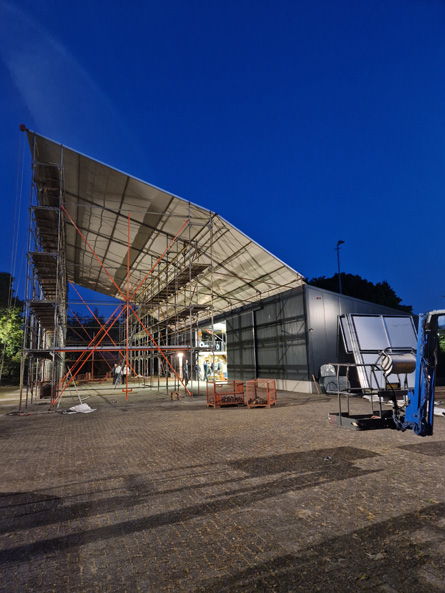
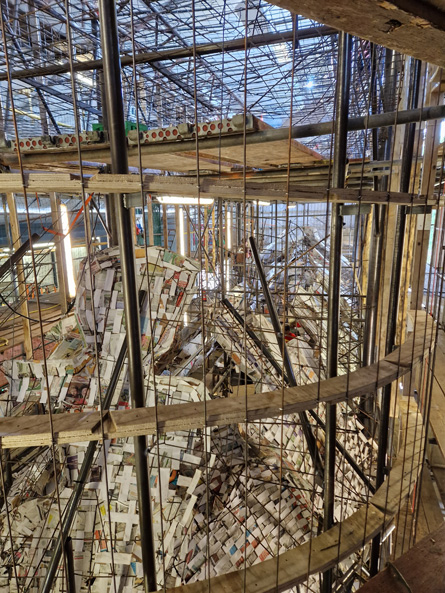
Q. How do you keep the flowers fresh and the float looking so good until the day of the parade? Do you freeze them and store them during the year?
A. No, we do not use last year’s flowers nor do we use any chilled or frozen flowers.
One of the reasons we use dahlia flowers is that it is a very strong flower. When picked on a Thursday, it is strong enough to keep its color until Monday next. We have no special tricks or materials to keep them fresh.
All flowers we use are fresh hand picked and yes, when picked on a Thursday, they are still strong on Monday. During the period from Thursday until Monday, the colour does not change, the flower is just drying out. Due to the nail in the flower, it holds onto the float without falling apart.
Q. After the parade, how do you clean up? Isn’t it sad to destroy such a beautiful work of art after the parade, especially when you spent such a long time to make it?
For sure it is a shame to destroy all beautiful floats. But what alterative do we have:
Let’s say we have kept all floats since 1960. Every year, we have about 20 floats. 20 floats x 62 years = 1260 floats x 19 meters = about 24 kilometre of floats, we don’t have room for that 😊
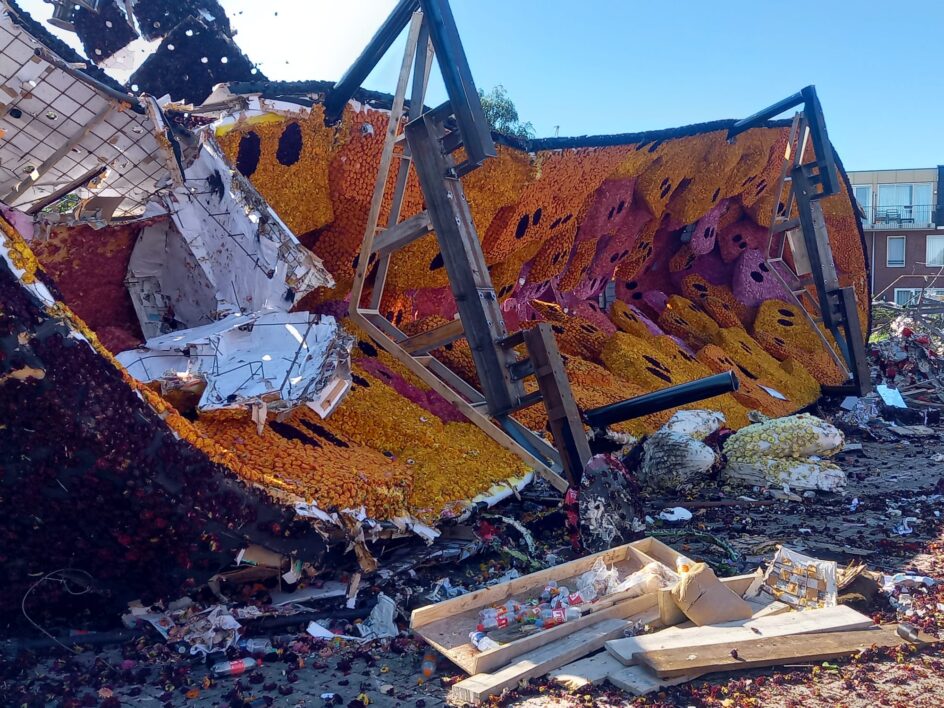
Q. How do you safely transport the float from the building tents to the parade venue?
In order to move our float to the exhibition centre, we can choose what to do. Push them by hand or to use a tractor. Last year, we always used tractors to move the floats.
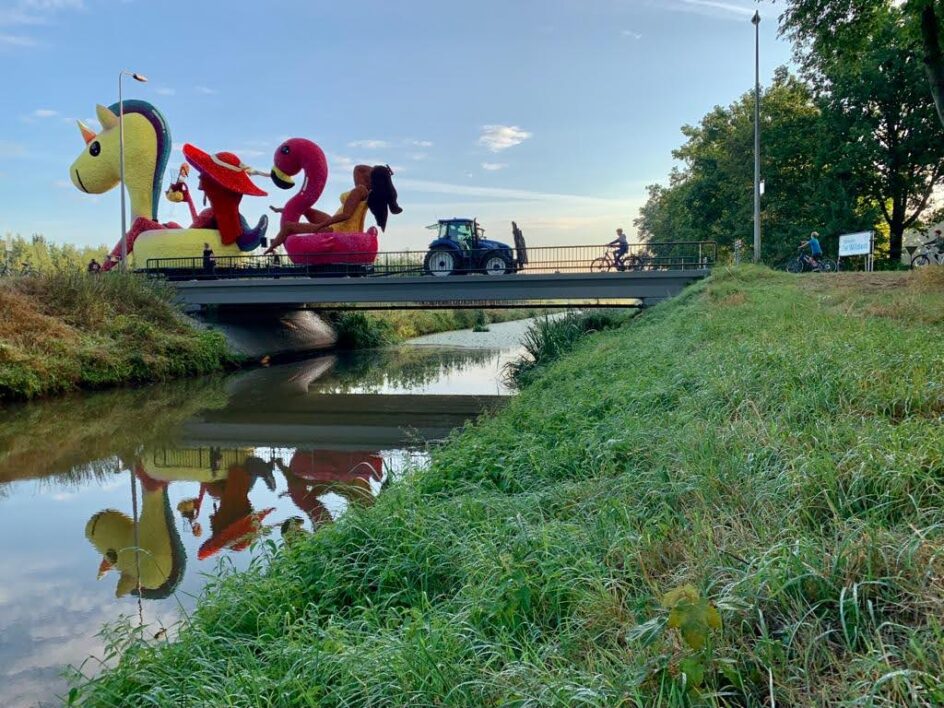
Q. Tell us about the volunteers. They look like they work very hard to push the float, and the parade track is very long.
A. Indeed, it’s hard to push the float for 5 kilometres but …it is also an honour to do so! Friendship, tension of ranking and enthusiasm of the public makes you keep pushing until the end. Same idea for the actors, dancers or people taking care of the moving parts (moved by hand).
And these volunteers….that is me, my wife, my son, my neighbour, their neighbours, families et cetera.
Q. What do you have planned for this year?
Which child entering a toy shop didn’t dream about a hero coming alive!
The title for this year’s float is “Helden” (“Heroes“).
The total length of the float is 19 meters and 9 metres high. The design contains 72 plastic heroes “toy boxes”, 36 on each side.
Every box is about 2.20 meters high, 1.20 metre wide and 0.50 meters deep and is filled with either an actor or a plastic doll. Each side has 6 different kinds of heroes, each of them with his/her own specific action. We estimated we will use 360,000 flowers. There will be 50 actors to play the heroes, and 22 dolls, all costumes to be made by ourselves as well as the choreography as well as the music.
Our heroes are:
- Inferno
- The Quoke
- Bubbles
- Frostbite
- Volta
- Focus
Every hero has its own characteristics, colours and play.

Q. Why do you think people should visit Corso Zundert?
Every first Sunday in September is the Bloemencorso Zundert (Flowerparade Zundert).
Come over and see for yourselves what pictures can’t tell you!
Every body is welcome to visit the hamlets and see with your own eyes how things are organised. Don’t forget: we are all volunteers, nobody gets paid and we’re proud of it!
Q. Can you recommend a place to stay for visitors?
The best way to see the parade is to sit on a grandstand the route. All grandstand have presenters and if I remember well there’s a grandstand where the presenters are presenting in English.
Apart from this, we have a program booklet explain all designs with an English translation.
Sounds amazing, no? Check out the details on how you can attend this event and see the results of their hard work on the event’s website below. Entry tickets are available now!
Grand stand seat tickets go on sale on Saturday June 1 2024 and sell out fast, so make yourself a reminder!
Visit: https://corsozundert.nl/en/tickets-en/
Want to know where the best seats will be to watch the parade? Download my guide to understanding the Corso Zundert map here:
How to read the Corso Zundert parade map
Send download link to:
And if you need help planning a trip to the Netherlands, consider hiring me to plan your holiday 🙂

